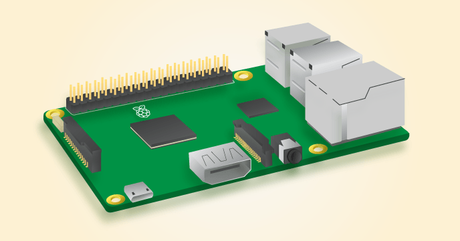Raspberry Pi 3 is the next version of Raspberry Pi series. This is a tremendous achievement in terms of technology. Because this is a single board computer that targets for connected devices. The release was in February 2016. Raspberry Pi 3 is a Windows 10 device that comes from the Raspberry Pi Foundation. In fact, this powerful device has 1.2 GHz Broadcom BCM2837 SoC. In addition, it has new innovative features like integrated 802.11ac wireless LAN and Bluetooth 4.1.
With the launch of Raspberry Pi 3, the Raspberry Pi Foundation elaborates few important factors. Firstly, the new device has around 50 percent increase in performance. Secondly, there is 33 percent increase in clock speed over its predecessor Raspberry Pi 2. Thirdly, the company confirms that there is a substantial increase in its processing power and functionality. The new device is perfectly eligible to function as an IoT Hub for your smart home applications and alliances. Finally, the price of this fabulous device is just $35.
These are the specifications as per their official website:
The Raspberry Pi 3 is the third generation Raspberry Pi. It replaces the Raspberry Pi 2 Model B in February 2016. When we compare it to the Raspberry Pi 2 it has:
- A 1.2GHz 64-bit quad-core ARMv8 CPU
- 802.11n Wireless LAN
- Bluetooth 4.1
- Bluetooth Low Energy (BLE)
Like the Pi 2, it also has:
- 1GB RAM
- 4 USB ports
- 40 GPIO pins
- Full HDMI port
- Ethernet port
- Combined 3.5mm audio jack and composite video
- Camera interface (CSI)
- Display interface (DSI)
- Micro SD card slot (now push-pull rather than push-push)
- VideoCore IV 3D graphics core
The Raspberry Pi 3 has an identical form factor to its earlier two predecessors Pi 2 (and Pi 1 Model B+). In addition, it is completely compatible with Raspberry Pi 1 and 2.
Raspberry Pi 3

Raspberry Pi Foundation recommends the Raspberry Pi 3 Model B for use in schools. Or for any general use. As a matter of fact, those wishing to embed their Pi in a project may prefer the Pi Zero or Model A+, which are more useful for embedded projects, and projects which require very low power.
